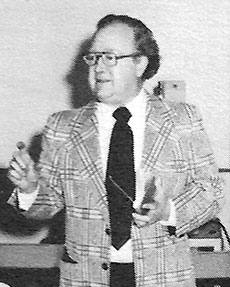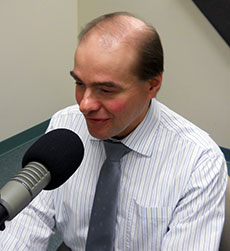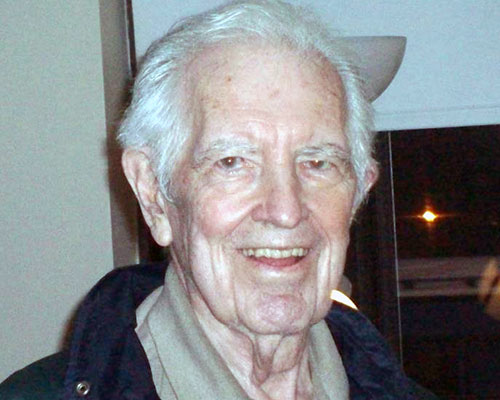Upon the death of Bernard J. “Barney” Gallagher in 2012, Haverhill lost much of its institutional memory.
Most news consumers are little aware of the financial struggles that led to these cuts. Nevertheless, a significant percentage of them not only have noticed a difference in the quantity or quality of news, but have stopped reading, watching or listening to a news source because of it.
A Series Examining the Evolution of Local News
Part 4 of a 5-part series
This series examines the evolving and lasting role of local news reporting, effects of WHAV’s unique entrepreneurial approach in shaping a competitive market, intersection of cutting edge and traditional technologies, importance of looking back in order to move forward and a bold vision of the future that offers advantages for residents now.
By Tim Coco
President and General Manager
When Bernard J. “Barney” Gallagher passed away at age 90 in 2012, the local news business lost much of its institutional memory.
Gallagher first went to work for the Haverhill Gazette during the 1930s, took time out to serve his country during World War II and then returned to the newspaper, ultimately advancing to managing editor. He served through three owners and gradually saw cutbacks decimate his newsroom staff. Ultimately, he lost his job there too during the early 1980s during a wave of payroll cutting. He, like another Gazette icon Thomas Vartabedian, hired in 1966 but who also lost his job, were quickly picked up by the then-new competitor in town, the Eagle-Tribune. Vartabedian has since retired from daily news reporting.
A newsroom is only as good as its talent—and its collective memory. The industry has lost too much of both during the last few decades. Pew Research Center, in its 2013 State of the News Media report, says the public has noticed.
“Faced with shrinking revenue and dwindling audiences, news organizations in recent years have slashed staffs and reduced coverage. Most news consumers are little aware of the financial struggles that led to these cuts. Nevertheless, a significant percentage of them not only have noticed a difference in the quantity or quality of news, but have stopped reading, watching or listening to a news source because of it,” the study found.
By 1981, the year I went to work there, Haverhill’s newspaper of record, the Gazette, had lost such local news luminaries as J. Joseph Moran, who first went to work for the newspaper as a 15-year-old copy boy and stayed for 60 years, and Vincent H. Driscoll, city editor hired in 1965. Moran, known for working seven-days-a-week, retired as managing editor in 1975 at age 75. Driscoll was only 57 when he died in 1983.
The Gazette had suffered losses before, such as the 1950s death of long-time city hall reporter Leon “Zacks” Bloomfield. Bloomfield was so beloved that the Haverhill City Council prominently displayed his portrait in the city council office. Lucky for Haverhill residents, there were still many seasoned reporters and editors to call on for background. In fact, former WHAV Program Director James Simmons took Bloomfield’s place at the newspaper.
Besides Gallagher and Vartabedian, the shrunken Haverhill Gazette staff of 1981 still included veterans Bob Gablosky, Jim Lenane (a former Haverhill Journal reporter), long-time sports editor Fred Burnham and society page editor and writer Dorothy “Dot” Patten. There were also at least a half dozen other reporters and editors.
And Even More Coverage Emanating From Over the Airwaves

Late WHAV News Director Edwin V. Johnson.
Over at WHAV, Edwin V. Johnson had served the community since 1951, ultimately working as news director and retiring in 1985. Ralph Hall, who was hired in 1963, provided the morning news for 18 years. Former WHAV and Gazette news writer Wendell Coltin observed in 1995 that Haverhill residents were not lacking for information.
“WHAV and its listeners had the benefit of ‘breaking’ news stories and the Greater Haverhill area was well covered, indeed blanketed with coverage.” Coltin went on to name other staffers that shared WHAV news duties when the radio station was still owned by the Gazette. These included Milton Connelly, Russ Dallaire and John “Lew” Gaffney.
Compare and contrast all of these reporters and their cache of local knowledge with today’s newsrooms. The number of possible news stories has gone up—not down. What is being overlooked because of a lack of reporters? More importantly, who’s getting away with what because a reporter isn’t there to catch them? Pew’s 2008 acknowledged the aftermath.
“The (newsroom) staff also is under greater pressure, has less institutional memory, less knowledge of the community, of how to gather news and the history of individual beats. There are fewer editors to catch mistakes.”
What Does the Future Hold?

WHAV News Director Dana Esmel previously worked for WCAP and WCCM.
WHAV’s expanded news operation—including two lifelong Haverhill residents and about 60 years of combined news experience—has helped ensure more news is reported, faster and more accurately. Technology, as mentioned earlier in this series, helps ease time-consuming tasks and allows for more reporting.
WHAV’s goal is to expand its news operation, especially as it moves closer to an FM on-air date. In fact, an additional reporter with knowledge of the local market will soon begin working. It is important this expanding staff build on WHAV’s reservoir of institutional memory, possess deep knowledge of the area and its people and maintain the highest standards of professional conduct and integrity.
To achieve this, you—the reader and listener—are being called upon for your support. The local economy likely cannot accommodate more news organizations. Residents are asked to support WHAV—the only Haverhill-based news source that’s always free.
Help WHAV “Make Waves” and Bring Local News to FM
 Tom Bergeron, honorary chairperson of WHAV’s “Make Waves” campaign, is asking for your help in raising at least $100,000 to put Haverhill’s own FM radio station on the air. A rare window of opportunity has opened that could put WHAV on FM sooner than anticipated, but it is dependent on your generosity. Please support the only Haverhill-based news source that’s always free with your donation by clicking here.
Tom Bergeron, honorary chairperson of WHAV’s “Make Waves” campaign, is asking for your help in raising at least $100,000 to put Haverhill’s own FM radio station on the air. A rare window of opportunity has opened that could put WHAV on FM sooner than anticipated, but it is dependent on your generosity. Please support the only Haverhill-based news source that’s always free with your donation by clicking here.
Tomorrow: Part 5: A Cautionary Tale

